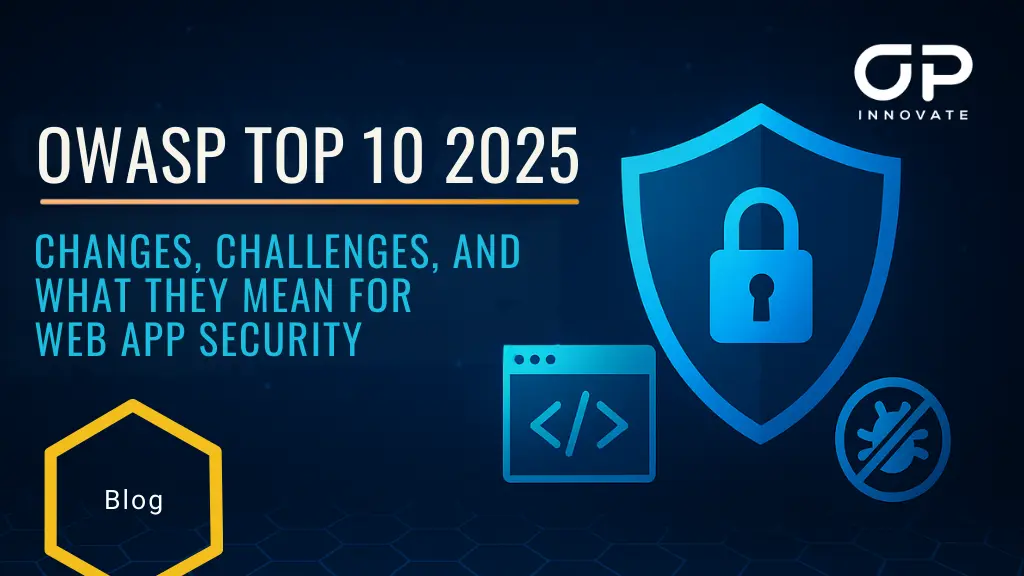Combining VDPs, BBPs, and In-House Testing: A Unified Approach to Cybersecurity. Beyond being mere alternatives, these strategies synergize to forge a comprehensive framework for vulnerability management, drawing on the skills of ethical hackers to fortify security defenses.
Vulnerability Disclosure Programs (VDPs)
A Vulnerability Disclosure Program (VDP) is an initiative undertaken by organizations to encourage individuals, including ethical hackers, security researchers, and even the amateur security sleuth, to report vulnerabilities or security issues they discover in the organization’s systems, applications, or digital infrastructure. The primary goal of a VDP is to foster a culture of transparency and cooperation between the reporting individual and the organization, ensuring that any identified vulnerabilities are disclosed responsibly and can be addressed before they can be exploited by malicious actors. VDPs typically outline a clear process for reporting vulnerabilities, by providing a framework for submitting the information, and what steps the organization will take upon receiving a report. While VDPs may not always offer monetary rewards, they ensure that individuals who report vulnerabilities do so without fear of legal repercussions, promoting a safer and more secure internet.
Bug Bounty Programs (BBPs)
A Bug Bounty Program (BBP) is a formalized initiative offered by organizations that provides monetary rewards or incentives to individuals who identify and report vulnerabilities or security flaws in their systems, applications, or platforms. BBPs are designed to leverage the skills and expertise of external ethical hackers and security researchers, encouraging them to scrutinize the organization’s digital assets for potential security issues. The rewards offered through BBPs are typically based on the severity and impact of the discovered vulnerability, aiming to incentivize the discovery of significant security flaws that could pose a risk to the organization or its users. BBPs often have defined scopes and guidelines that specify which systems are eligible for testing and what types of vulnerabilities the organization is interested in, encouraging focused and responsible vulnerability discovery and disclosure.
In-House Penetration Testing
This involves a team of internal security experts who conduct systematic tests on the organization’s systems and applications to identify vulnerabilities. It’s a controlled and focused approach that allows for deep dives into specific areas of the IT infrastructure.
In-House Penetration Testing is a proactive and systematic approach conducted by internal security experts to identify and mitigate vulnerabilities within the organization’s systems and applications. Unlike external vulnerability discovery initiatives like VDPs and BBPs, In-House Penetration Testing relies on the organization’s own security team or IT staff to simulate cyber-attacks and breach attempts under controlled conditions. This method allows for a deeper and more tailored examination of the organization’s specific security posture, enabling the identification of potential weaknesses from the perspective of an insider. The primary objective is to preemptively uncover and address security issues before they can be exploited by external threats, enhancing the organization’s overall cybersecurity resilience. By conducting these tests internally, organizations can maintain greater control over the process, ensuring confidentiality and minimizing external risks, while fostering a culture of continuous security improvement and awareness among their staff.
Comparative Analysis
The table below provides a comparison of how each component fits into a cybersecurity strategy:
| Feature | Vulnerability Disclosure Programs (VDPs) | Bug Bounty Programs (BBPs) | In-House Penetration Testing |
| Objective | Encourage the ethical reporting of vulnerabilities by anyone. | Incentivize the discovery of vulnerabilities with monetary rewards. | Systematically identify vulnerabilities within the confines of a controlled environment, timeline and stricter rules of engagement (RoE). |
| Incentives & motives | No monetary rewards; possible recognition and “bragging rights”. | Monetary rewards based on severity and impact. | Conducted by salaried employees as part of their job roles. |
| Scope | Broad, inviting a wide audience to report vulnerabilities. | Defined by the organization, focusing on specific systems or areas. | Focused on specific systems or applications as determined by the organization. |
| Participants | Open to all, including non-experts. | Targets ethical hackers and researchers with specific skills. | Internal security experts or contracted professionals. |
| Cost | More cost-effective, especially if no financial compensation is offered | Potentially pricey if unexpected severe vulnerabilities are uncovered, due to monetary rewards. | Fixed costs associated with staff time and resources. |
| Disclosure | Promotes responsible disclosure without fear of legal repercussions. | Requires detailed, structured reporting and ethical handling of discovered vulnerabilities. | Findings are kept internal until resolved. |
| Community Engagement | Fosters broad community engagement and awareness. | Engages a skilled community for specialized scrutiny. | Limited to internal teams or contracted professionals. |
| Compliance and Reputation | Builds trust and demonstrates commitment to security norms. | Enhances reputation through proactive cybersecurity efforts. | Demonstrates a proactive approach to cybersecurity within the organization. |
| Implementation Complexity | Simpler, without the need for payment structures. | Requires structured management for submissions and rewards. Can be costly if asset and technique scopes are not carefully composed. | High, due to the need for skilled professionals and comprehensive planning. |
Integrating VDPs and BBPs with In-House Penetration Testing for Enhanced Security
Integrating VDPs and BBPs with in-house penetration testing allows organizations to cover a broad spectrum of vulnerability discovery and mitigation efforts. Here’s how they complement each other:
- Comprehensive Coverage: While in-house penetration testing provides depth in specific areas, VDPs and BBPs extend the scope, engaging a wider community to identify vulnerabilities that might be overlooked internally.
- Continuous Security: In-house manual penetration testing is typically periodic, whereas VDPs and BBPs offer continuous monitoring and reporting of vulnerabilities, ensuring that new threats are identified and addressed promptly.
- Cost Efficiency: Combining internal efforts with VDPs can be a cost-effective way to enhance security posture. BBPs, although more costly, focus on high-impact vulnerabilities, ensuring that investments yield significant security improvements. It is important to note that BBPs incur costs only upon the identification of a vulnerability; if no issues are discovered, there is no financial obligation. This payment model ensures that expenses are directly proportional to the uncovering of actionable security threats, making BBPs an efficient and cost-effective solution for bolstering security measures.
- Enhanced Expertise: The external researchers participating in BBPs bring diverse skills and perspectives, complementing the specialized knowledge of in-house teams and potentially uncovering complex vulnerabilities.
Challenges and Solutions
Challenge 1: Managing the Influx of Reports from VDPs and BBPs
- Challenge: Both VDPs and BBPs can potentially generate a significant number of vulnerability reports. The sheer volume can overwhelm security teams, especially if many reports are duplicates, out of scope, or not actionable due to insufficient information.
- Solution: Implementing a robust triage process is crucial. Organizations can use automated tools to pre-screen reports, identifying duplicates and filtering out submissions that don’t meet the program’s criteria. Establishing a dedicated team for initial assessment can also help manage the workload. This team can prioritize reports based on severity and impact, ensuring that critical vulnerabilities are addressed promptly.
Challenge 2: Ensuring the Quality of In-House Testing
- Challenge: In-house penetration testing relies on the expertise and thoroughness of the internal team. There’s a risk of bias or oversight, where testers might miss vulnerabilities due to familiarity with the system or lack of diverse skill sets.
- Solution: Regular training and upskilling of the in-house team are essential to keep pace with evolving cybersecurity threats. Additionally, cross-training with external experts or participating in ‘red team-blue team’ exercises can provide fresh perspectives and uncover blind spots. Integrating automated vulnerability scanning tools can also complement the manual testing process, ensuring broader coverage and detection of common vulnerabilities.
Challenge 3: Balancing Cost and Benefit
- Challenge Description: Running BBPs, in particular, can be costly, especially for high-severity vulnerabilities. Organizations need to balance the financial aspect of rewarding discoveries without compromising other areas of their cybersecurity budget.
- Solution: Setting clear scopes and rules for BBPs can help control costs by focusing efforts on the most critical areas of the infrastructure. Additionally, tiered reward systems based on the severity and impact of the vulnerability can ensure that payouts are proportionate to the value they bring. For VDPs, fostering a culture of recognition, beyond monetary rewards, can also be a cost-effective way to encourage participation.
Challenge 4: Legal and Privacy Concerns
- Challenge Description: Both VDPs and BBPs involve external parties probing the organization’s systems, raising potential legal and privacy issues. There’s a risk of unintentional data access or system damage during the testing process.
- Solution: Clearly defined legal guidelines and safe harbor policies in the program’s terms and conditions are essential. These policies protect both the organization and the researchers by outlining acceptable testing methods and reporting processes. Engaging with legal counsel to draft these documents can ensure they meet regulatory compliance and protect sensitive data.
Conclusion
Merging VDPs, BBPs, and in-house testing forms a layered defense strategy, significantly strengthening cybersecurity. This approach not only improves vulnerability management but also fosters a culture of security within and beyond the organization.
OP Innovate, specializing in cybersecurity, excels in managing VDPs, leveraging our Wasp platform to streamline testing and vulnerability management. Our VDP-as-a-Service, powered by Wasp, centralizes and triages vulnerability reports, tapping into the white-hat hacker community for broader, more effective security coverage.









